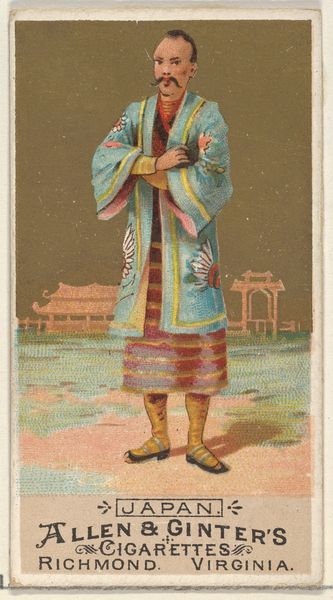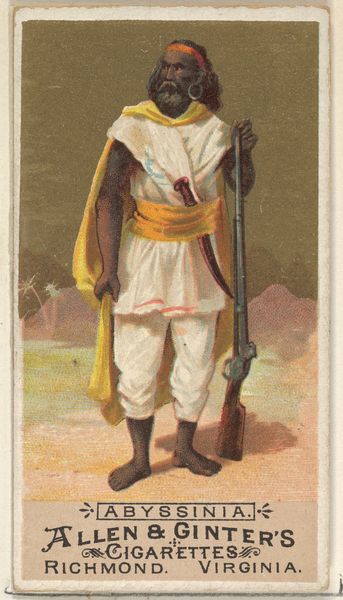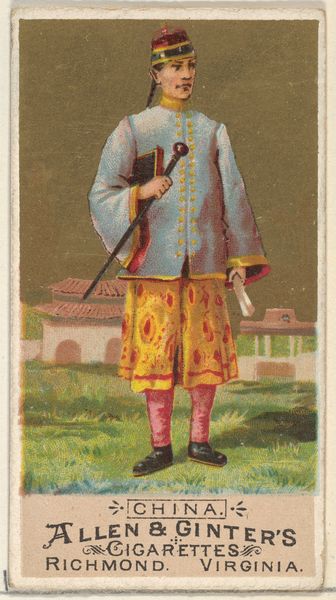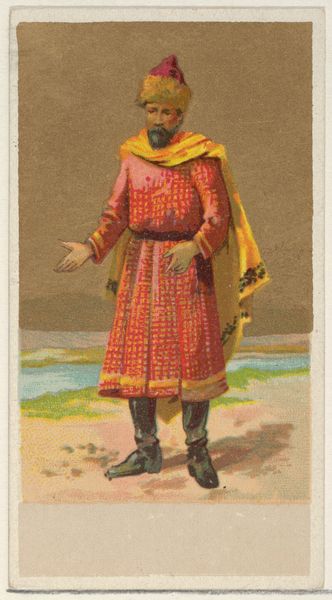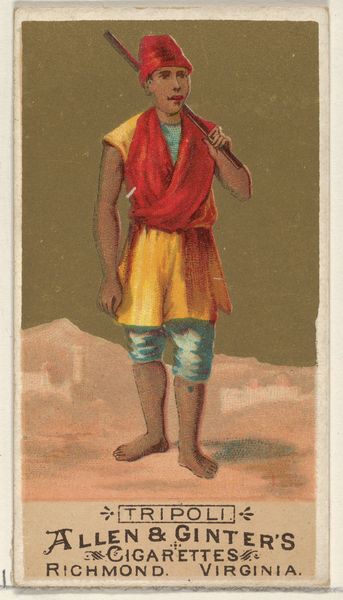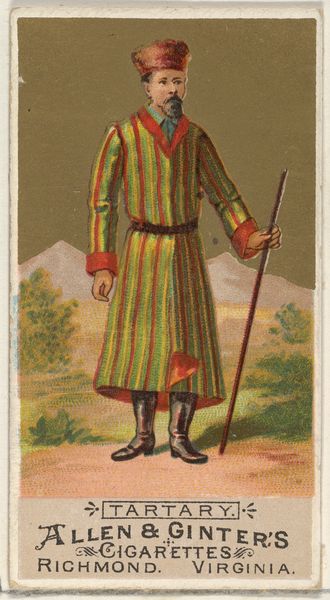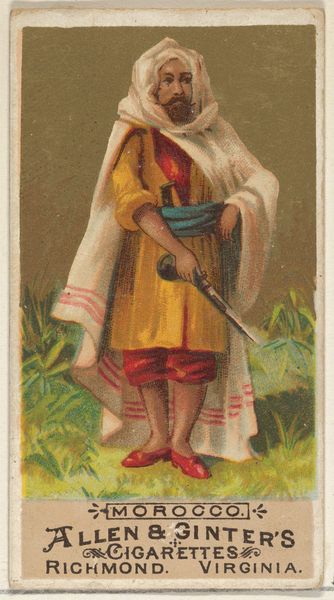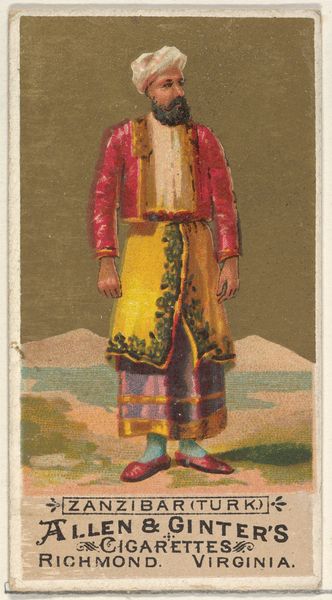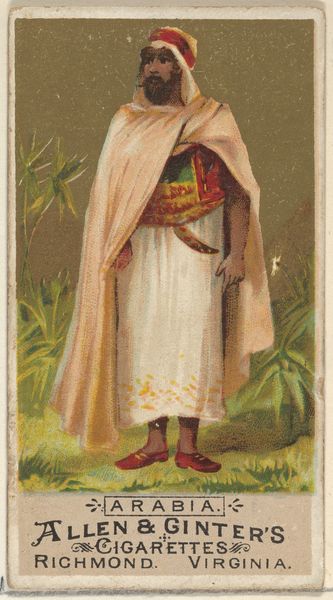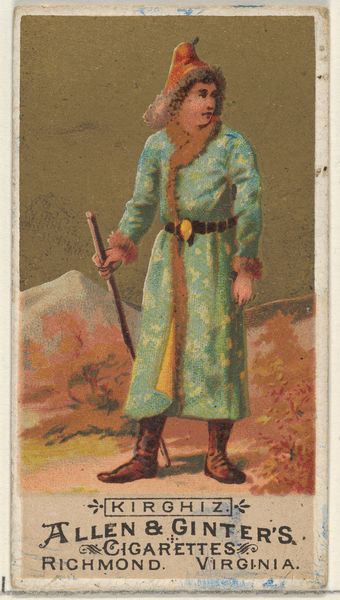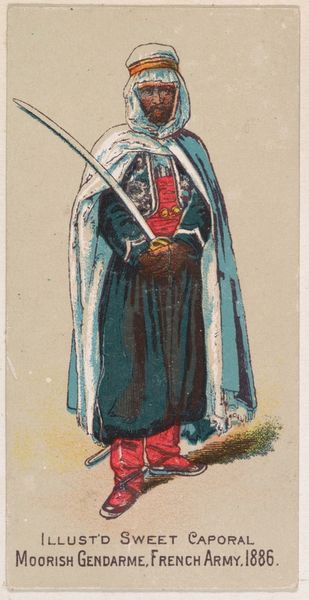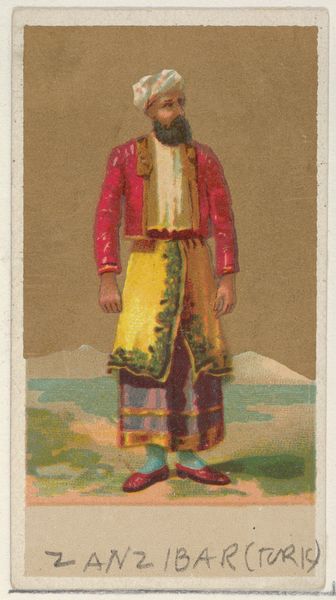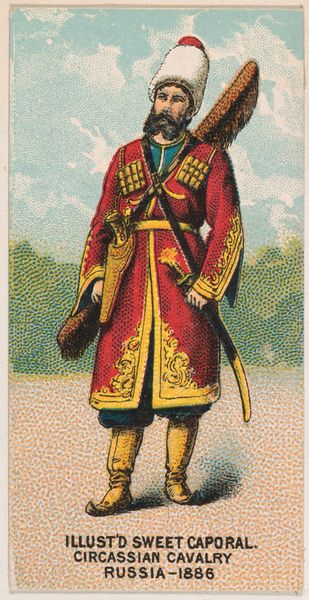
Korea, from the Natives in Costume series (N16), Teofani Issue, for Allen & Ginter Cigarettes Brands 1886 - 1900
0:00
0:00
drawing, coloured-pencil, print
#
portrait
#
drawing
#
coloured-pencil
# print
#
coloured pencil
#
orientalism
Dimensions: Sheet: 2 3/4 x 1 1/2 in. (7 x 3.8 cm)
Copyright: Public Domain
Curator: My first impression is one of concealment. The figure’s face is almost entirely obscured. It feels...distancing. Editor: That’s quite telling, especially given that this chromolithograph print titled “Korea, from the Natives in Costume series (N16), Teofani Issue, for Allen & Ginter Cigarettes Brands,” made between 1886 and 1900, comes from a series intended to portray cultural types. It was marketed by a cigarette company. Curator: So, what appears to be a neutral portrayal is actually designed to sell cigarettes! I notice the strong use of color blocking, almost like symbolic divisions, from the earth tones in the background, the sharp contrasting clothes and the masked face...a society layered and possibly segregated. Do the clothes point to class? Editor: Quite possibly. These cards, inserted in cigarette packs, were incredibly popular. What strikes me is the flattening effect of the printmaking process itself. It transforms a living person into a two-dimensional object, not unlike the act of consumption the cards encourage. The visual flattens culture into a consumable. Curator: The mask, I think, taps into something primal. Veiling has been used in societies throughout history, sometimes for practical protection against sand or sun, sometimes religious modesty, sometimes for something less visible—it might point to the unknown, to cultural secrets and societal barriers. It evokes all of those things simultaneously here. The lack of detail pushes Korea into a symbolic role. Editor: Exactly! The public role here is fascinating, especially how such imagery played into both curiosity about other cultures and, subtly, a reinforcement of Western dominance through exoticizing these "native" figures. Consider that it's from Allen & Ginter— a quintessentially American brand using another country's image for capital gain. Curator: Yes, so the image acts like a filter, offering a pre-packaged, easily digestible version of Korean culture. This creates cultural memory rooted more in projection and consumption rather than actual representation. Editor: These small prints hold an immense history. They offer a glimpse into how commercial interests and societal perspectives shaped the West’s view of other cultures. Curator: Indeed, by looking through such artworks and understanding such motivations, we become wiser interpreters of not only this artwork, but of the society for which they stood.
Comments
No comments
Be the first to comment and join the conversation on the ultimate creative platform.
